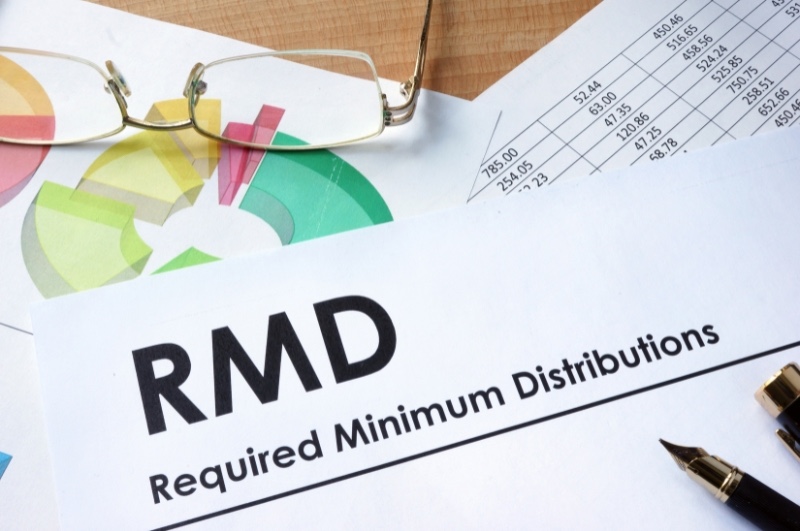Tax season is often viewed as a stressful time of year, but with proactive planning, it doesn’t have to be. Strategic tax planning allows you to stay ahead, reduce your liabilities, and ensure that more of your hard-earned money works for you. The key to success lies in understanding the latest tax laws, leveraging available deductions, and seeking personalized strategies tailored to your unique financial situation. By aligning your tax strategies with your long-term financial goals, you can turn potential tax burdens into opportunities for growth and stability.
With 2025 already shaping up to be a pivotal year for financial planning, now is the time to take a closer look at how smart tax strategies can create meaningful savings and contribute to your broader wealth management objectives!
Optimize Your Retirement Contributions
Maximizing your contributions to tax-advantaged retirement accounts is one of the most effective ways to reduce your taxable income. Plans like 401(k)s and IRAs allow you to defer taxes on your contributions and investment gains, enabling your wealth to grow tax-free until retirement. In 2024, the IRS increased the 401(k) contribution limit to $23,000.
If you’re 50 or older, you can also take advantage of “catch-up” contributions of $7,500. Individuals between 60-63 in 2025 can contribute an additional $3,750 to boost savings further.
Beyond the traditional options, consider other tax-efficient retirement vehicles, such as Roth IRAs. Even though contributions to a Roth IRA are made with after-tax dollars, qualified withdrawals in retirement are entirely tax-free. The IRS increased the Roth IRA contribution limit to $7,000; contributions made before April 15 will count for the previous year. Balancing contributions between traditional and Roth accounts can provide flexibility in managing taxes in retirement, helping you adapt to changes in tax laws or your income levels.
Make Use of Tax-Loss Harvesting
Tax-loss harvesting is a savvy strategy for investors looking to offset capital gains. By selling underperforming investments at a loss, you can use those losses to offset taxable gains from other investments. Even if your losses exceed your gains, up to $3,000 of net losses can be deducted against your ordinary income, with any additional losses carried forward to future tax years.
However, timing and execution are critical when employing tax-loss harvesting. The IRS’s wash-sale rule prevents you from repurchasing a similar investment within 30 days of the sale to claim the loss. Working with a skilled financial advisor can help you navigate this rule and identify opportunities to optimize your portfolio for tax efficiency.
Leverage Tax Credits
Tax credits provide a dollar-for-dollar reduction in your tax liability, unlike deductions, which reduce your taxable income. Some of the most impactful credits to explore in 2025 include the Child Tax Credit, Earned Income Tax Credit (EITC), and various education credits like the American Opportunity Tax Credit (AOTC) or Lifetime Learning Credit (LLC).
If you own a business, research industry-specific credits, such as those for research and development or energy-efficient practices. Tax credits can vary widely based on your situation, so staying informed about eligibility requirements and phase-out limits is essential to maximize your benefits.
Consider Charitable Giving Strategies
Charitable contributions can provide significant tax benefits while supporting causes that matter to you. Donating appreciated assets, such as stocks or real estate, rather than cash allows you to avoid capital gains taxes while receiving a deduction for the asset’s fair market value.
For larger charitable endeavors, a donor-advised fund (DAF) can be an excellent vehicle for managing your philanthropic goals. By contributing to a DAF, you can claim an immediate tax deduction while maintaining the flexibility to distribute funds to charities over time. This strategy can be especially beneficial in high-income years, allowing you to optimize your deductions.
Take Advantage of Health Savings Accounts (HSAs)
If you’re enrolled in a high-deductible health plan, a Health Savings Account (HSA) is a triple-tax-advantaged tool worth exploring because growth within the account is tax-free, contributions are tax-deductible, and withdrawals for qualified medical expenses are also tax-free.
Unlike Flexible Spending Accounts (FSAs), HSAs don’t come with a “use-it-or-lose-it” rule, meaning your contributions can roll over year after year. Many account holders treat their HSA as an investment vehicle, letting it grow over time and using it to cover healthcare costs in retirement.
Discover Tax Planning Services from Scottsdale Wealth Advisory
At Scottsdale Wealth Advisory, we specialize in transforming complex tax scenarios into streamlined strategies tailored to your unique financial needs. Our comprehensive tax planning services go beyond simply identifying deductions—we create a roadmap to align your tax strategies with your overall wealth management goals.
Whether you’re navigating retirement contributions, optimizing charitable giving, or exploring investment opportunities, we’re here to provide expert guidance every step of the way. By staying ahead of changes in tax laws and leveraging advanced planning techniques, we ensure your financial strategies remain as dynamic as your goals.
Ready to unlock meaningful savings and enhance your financial future? Schedule a consultation with Scottsdale Wealth Advisory today!
Facebook are like the lifeblood of mobile phones and tablets today. The true potential of your mobile phone is harnessed by applications can provide utility. Apps come under various segments.Applications are like the lifeblood of mobile phones and tablets todayue potential of your mobile phone.






